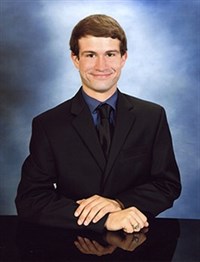 His team might not have been from Texas A&M University, but an Aggie still helped take home the top honors at the SpaceX Hyperloop Pod Competition Design Weekend held at Texas A&M’s Kyle Field on Jan. 29-30.
His team might not have been from Texas A&M University, but an Aggie still helped take home the top honors at the SpaceX Hyperloop Pod Competition Design Weekend held at Texas A&M’s Kyle Field on Jan. 29-30.
John Mayo, a 2014 Texas A&M graduate in mechanical engineering and a graduate of A&M Consolidated High School in College Station, Texas, was the project manager for the Massachusetts Institute of Technology’s (MIT) team that won the competition. He’s now seeking his master’s in mechanical engineering at MIT, and said it was exciting to be back in his hometown for the event so that his MIT friends would finally understand the school he came from.
“I was trying to explain A&M to all of these people from other schools like Berkeley or Delft, from all over the world, and they never really understood,” he said. “So finally it was great to be there and to be able to show them everything.”
Mayo said his time at Texas A&M, specifically his time working with the Formula SAE car in his senior capstone course, prepared him for the work he is doing now.
“A lot of our Hyperloop team at MIT is made up of former SAE people. The experience I had through mechanical engineering in that program definitely has helped us be successful in this competition. Bringing that from A&M brought a lot of insight, that was one of the most realistic real-world senior design projects I could have ever have done.”
According to Mayo, the MIT team focused on making its pod buildable so that it could actually produce it in time for this summer’s competition in California. As a result, the team’s pod was pretty straightforward and, in Mayo’s terms, “didn’t look as slick as some of the others.” In fact, Mayo said his team’s members were so impressed with a number of other teams that they weren’t going to be surprised if they didn’t win.
“There were a lot of very innovative designs,” he said. “Being among the other teams and talking to them was great. There were a lot of really neat things there. We weren’t going to be upset if we didn’t win because there were so many great designs out there.”
Mayo couldn’t stay in College Station for the results though because he is also part of MIT’s HERMES Humanoid Robot System, which was competing in the United Arab Emirates Robotics for Good competition. He left for Dubai after the first day of the Hyperloop competition, and was in bed at 3:30 in the morning when his phone started buzzing.
“Everyone was texting and saying we won,” Mayo said. “I had a SIM card and I blew all my minutes in my first six hours of being here because I was talking to people back home. The energy from the team, I could feel it here. It was an unreal feeling that we won. I wish I could have been there. But I can’t be in two places at once.”
The stakes were slightly higher in Dubai, where Mayo’s MIT team was one of six finalists that competed for a $1 million grand prize. He describes the HERMES as something similar to the robots in the movie Pacific Rim in the way that the user interacts with the robot. One of their examples of how HERMES could have been used was in repairing the main reactor during the Fukushima meltdown in 2011.
“It’s a person inside of a suit operating it, and when the robot gets hit or anything, the person feels it in the suit mechanically,” he said. “It’s the concept of having a person fully immersed in the experience of operating the robot, not only giving it commands with the exoskeleton suit, but also feeling mechanical pushes so they can tell how the robot is doing in the situation. It’s intended for disaster response purposes where you don’t want to send a person but you want a person’s full ability to sense their environment and react to unknown situations there.”
Even though Mayo had to miss the second day of the Hyperloop competition to be in Dubai, he said the excitement from his teammates and the feedback from other teams showed that the event was great exposure for Texas A&M.
“The competition definitely put A&M even more on the map in engineering,” he said. “Especially for teams like Delft from around the world. They know the engineering caliber of Texas A&M now, and the hospitality was great.”
A&M professor emeritus Dr. Make McDermott was the adviser for the SAE team when Mayo was a senior. McDermott said the thing that always stuck out to him is how Mayo still made time to work with local high schools and middle schools competing in robotics competitions.
“He was one of the very best students that I taught in 42 years at Texas A&M,” McDermott said. “He’s not only very intelligent but he’s got great people skills and he’s so energetic. I was just looking back over his resume and even looking at it makes me tired.”
Mayo has accepted a position starting this fall working at the NASA Jet Propulsion Laboratory in the Robotic Mobility and Manipulator Group.